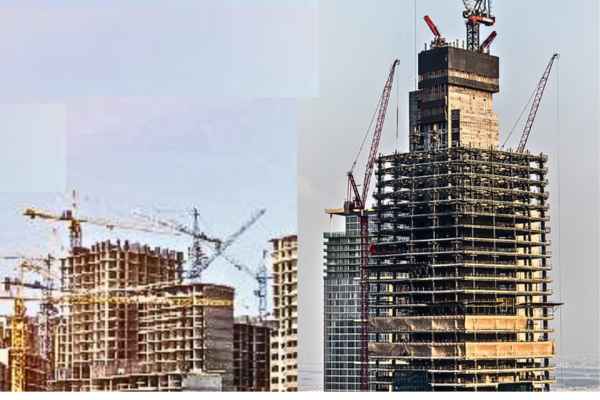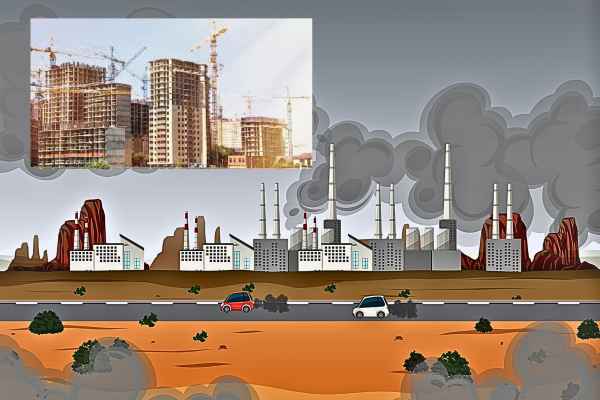Image by brgfx on Freepik
As our race against Climate Change enters its crucial phase, an often-overlooked contributor to this challenge emerges – Embodied Carbon.
The Announcement
The IPCC‘s ( Intergovernmental Panel on Climate Change ) Sixth Assessment Report sounds the alarm: humanity’s Carbon budget can only accommodate an additional 500 gigatonnes of Carbon dioxide from January 2020 onwards if we are to maintain a 50 percent chance of limiting global warming to 1.5 degrees Celsius.
Unfortunately, in just 2021, we emitted a staggering 36.3 gigatonnes of Carbon, a record high. At this rate, we are hurtling toward surpassing our Carbon budget within the next few years. To emphasize the urgency, the IPCC warns, “The choices and actions implemented in this decade will have impacts now and for thousands of years.“
The Culprit Identified for Climate Change
In this Climate crisis, the Real Estate industry emerges as an unexpected Climate villain, trailing closely behind the Oil and Gas sector, contributing to about 40% of global greenhouse gas emissions. What’s even more astonishing is that building materials alone account for roughly 11% of all global greenhouse gas emissions – surpassing the combined emissions from the fashion industry and air travel.

While this percentage is lower than emissions from the operation of buildings, it’s important to note that as our energy grids become greener and buildings transition to electricity, embodied Carbon in building materials will represent a progressively larger share of the real estate industry’s total emissions. In fact, the upfront emissions tied to constructing a building can be equivalent to more than 10 years of the building’s operational emissions.
FINISHING or STRUCTURAL Phase ? which one contributes to Climate Change ?
Surprisingly, although structural materials make up the lion’s share of a building’s embodied Carbon emissions related to initial construction, experts estimate that finishes and furnishings are responsible for over 50% of a building’s Carbon footprint throughout its lifespan. Astonishingly, one recent report even attributes around 50% of a commercial building’s Carbon footprint to furniture alone.
Embodied Carbon Emission Vs Operational Carbon Emission
What’s truly concerning is that once building materials are selected and the construction process begins, these embodied Carbon emissions become “locked in.” Unlike operational emissions, there’s no turning back or reducing the Carbon footprint associated with these materials.
The argument for measuring embodied Carbon is compelling, yet a majority of firms remain reluctant to do so, despite the fact that, for many real estate developers, embodied Carbon accounts for more than 80% of their emissions in a given year. Why is this reluctance so prevalent?
Firstly, the real estate industry has historically placed more emphasis on operational Carbon, relegating embodied Carbon to the “nice to have” category. However, this is rapidly changing, thanks to evolving legislation, particularly in North America. For instance, California’s recently approved California Green Building Code (CALGreen) mandates a 10% reduction below the baseline starting in 2024.
Toronto, in its Green Standard Version 4, requires adherence to an embodied Carbon intensity of 350 kg CO2e/m2, which is expected to become mandatory. Vancouver will soon require buildings to achieve a 10-20% reduction below baseline starting in 2025.
Climate Change : Tools To Measure Embodied Carbon Emissions
Additionally, measuring embodied Carbon has traditionally been challenging. Nevertheless, the emergence of tools like Tangible, EC3, and BEAM is making the process more accessible and comprehensible to a wider range of stakeholders, including real estate owners and developers.
Another reason for hesitation among real estate firms is the fear of what might be revealed once embodied Carbon is measured. While high Carbon figures may appear daunting, it’s important to remember that disclosure laws like the one recently passed in California could pave the way for a Carbon tax.
Here are some initial steps that real estate firms can take:
1. Establish an Embodied Carbon Baseline
Start by measuring embodied Carbon consistently, ideally in as much detail as possible. This will serve as a reference point for comparison.
2. Set Clear Targets
Understand if there are industry peers to benchmark against or specific regulations to comply with. Use these benchmarks to establish decarbonization goals.
3. Identify Areas for Improvement
Determine which building materials or product categories are responsible for especially high Carbon emissions.
Lastly, it’s essential to understand that limiting global warming to 1.5 degrees Celsius, rather than 2 degrees Celsius, can significantly reduce the number of people exposed to Climate-related risks and poverty by 2050. Climate science has spoken, and it’s time for real estate to listen and act.
A Building’s Carbon Footprint: Beyond the Surface
While the Carbon footprint of buildings might seem modest at first glance, a deeper examination reveals a more significant impact. In particular, indirect emissions, such as electricity consumption, can amplify a building’s Carbon footprint dramatically.
Buildings, while contributing only 6% of global emissions, can see their Carbon footprint triple when considering electricity use and the materials used in their construction.
Historical data from the International Energy Agency (IEA) shows that buildings have made little progress in reducing their Carbon footprint since 2010. However, as our energy landscape shifts toward greater electrification, efficient electricity usage becomes paramount in curbing emissions in places where people live and work daily.
Understanding a building’s emissions lifecycle is crucial. It comprises three main categories: Materials and Construction (30% of emissions), Operational (50% of emissions), and Replacement or Demolition (20% of emissions), according to the World Business Council for Sustainable Development (WBCSD).
With the increasing demand for electricity in buildings, it’s vital to consider the source of this electricity. Even as homes and commercial buildings adopt efficient technologies like LED lighting, heat pumps, and solar water heating, the Carbon footprint of electricity sourcing should not be ignored. Electrifying buildings can strain the power grid, but technology offers solutions to prevent this strain.
In fact, buildings have the potential to become valuable assets to the power grid, helping balance fluctuations in electricity supply as renewable energy sources become more prevalent.
Conclusion
In conclusion, when it comes to understanding and mitigating a building’s Carbon footprint, it’s essential to look beyond surface-level emissions. By considering both direct and indirect emissions, we can make more informed decisions to create sustainable and environmentally friendly buildings.




